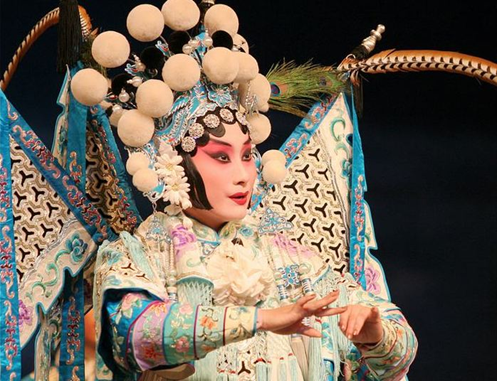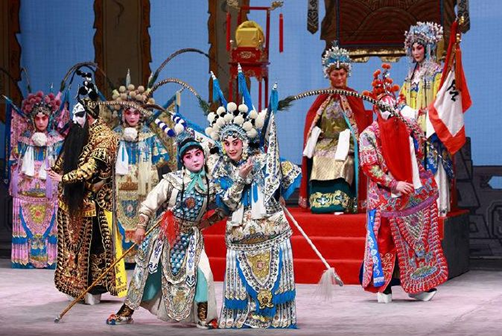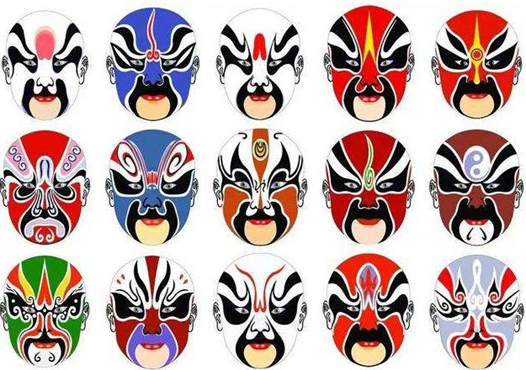Chinese
opera is an important part of Chinese culture. After a long period of
development and evolution, Chinese opera has gradually formed a Chinese opera
library centered on the five major Chinese opera types of "Peking Opera,
Yue Opera, Huangmei Opera, Ping Opera, and Henan Opera". Chinese drama is
loved by the people because of its artistic and charming performance form and
it also occupies a unique position in the world theater scene.
Peking
opera is broadcast throughout the country and has a wide impact, and is known
as the "national opera". The Peking Opera performance system named
after Mei Lanfang is regarded as the representative of the Oriental theater
performance system and is one of the three major performance systems in the
world. Peking opera is an important manifestation of the traditional culture of
the Chinese nation. In May 2006, Peking opera was included in the first batch
of national intangible cultural heritage lists. In 2010, it was included in the
UNESCO Intangible Cultural Heritage List.

Peking
opera, also known as Ping opera, is the most influential Chinese opera genre.
It is distributed in Beijing and spread all over the country. During the
Qianlong period of the Qing Dynasty, the four Huizhou troupes entered Beijing
one after another to cooperate with Han tune artists from Hubei. At the same
time, they accepted some repertoires, tunes and performance methods of Kunqu
Opera and Qin Opera as well as some local folk tunes. Through continuous exchanges,
Peking Opera finally formed.
Peking
opera has a set of standardized artistic expressions in various aspects such as
literature, performance, music, and stage art. The singing of Peking Opera is a
variation of the style, with Erhuang and Xipi as the main voices. Peking opera
accompaniment is divided into two categories: literary field and martial field.
Huqin is the main instrument in the literary field, and the drum board is the
main instrument in the martial arts field.

The
four artistic techniques of Peking opera performance: singing, chanting, doing,
and playing are also the four basic skills of Peking opera performance. Singing
refers to singing and reading refers to musical chanting. The two complement
each other and constitute the "song", which is one of the two major
elements of the singing and dancing Peking Opera art. Doing dance-like physical
movements, finger-fighting and tumbling skills, the two combine with each other
to form "dance", one of the two major elements of the singing and
dancing Peking Opera performance art.
Opera
actors must be trained in these four aspects from an early age, and each actor
must have the four basic skills of singing, reading, doing, and playing. Only
in this way can we give full play to the artistic characteristics of Peking
Opera. Better performance and portray various characters in the play. Peking
opera has singing, dancing, dialogue, martial arts, and various symbolic
movements. It is a highly comprehensive art.
The
roles of Peking Opera are divided into Sheng, Dan, Jing, Chou, Miscellaneous,
Wu, Liu, etc. The latter three are no longer dedicated. Each profession has a
set of performance programs, and the skills of singing, thinking, and fighting
have their own characteristics. The main performance content of Peking Opera is
historical stories. There are about 1,300 traditional repertoires, and more
than 300 or 400 are often performed.

Peking
opera masks are also diverse, and different colors of Peking opera masks have
different meanings. Red face contains praise and loyalty. Black face is
neutral, representing Mengzhi. The blue face and the green face are also
neutral, representing rash heroes. The yellow face and the white face are
derogatory and represent fierce and evil. The golden face and the silver face
are mysterious and represent the gods.
The
color painting methods of Beijing Opera facial makeup are basically divided
into three categories: rubbing the face, wiping the face, and hooking the face.
The initial role of facial makeup is to exaggerate the facial features and
facial textures of the characters in the play, and use exaggerated techniques
to express the personality, psychological and physical characteristics of the
people in the play, so as to serve the plot of the entire play. After the
development of Peking Opera facial makeup, facial makeup changed from simple to
delicate and gradually became a pattern art with national characteristics and
using human faces as a means of expression.

Comment Cancel reply